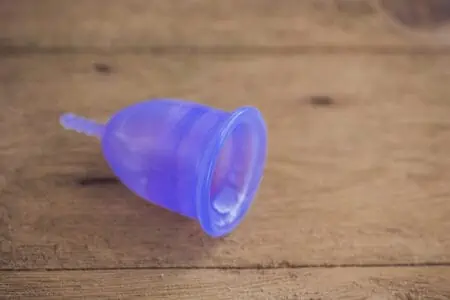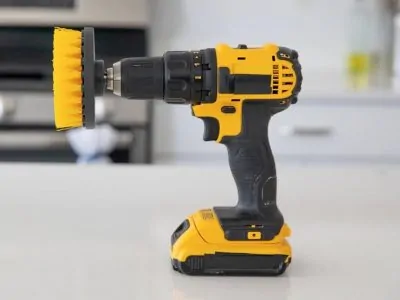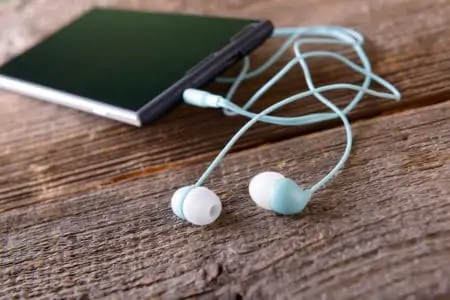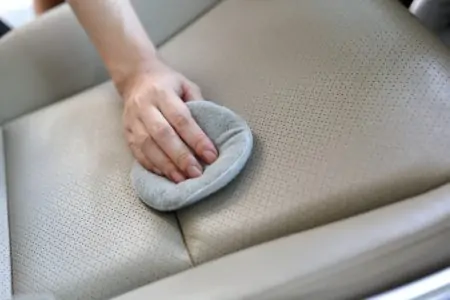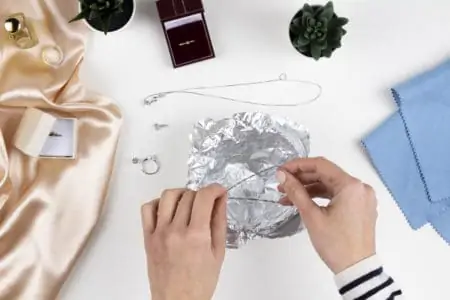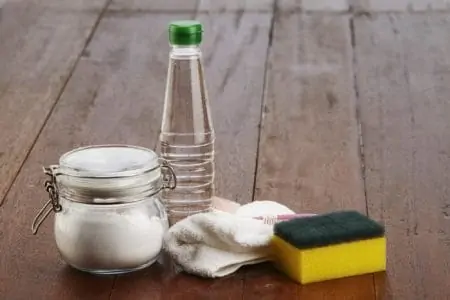Menstrual cups have great benefits: they’re eco-friendly, cheaper in the long run, and more effective. But one of the drawbacks is that you need to clean it yourself.
We’ve been using menstrual cups for years, so you can trust that we know the best methods for cleaning one.
It’s time you learn how to clean a menstrual cup properly, whether you’re at home, in a public bathroom, or while you’re traveling.
Key Takeaways
- Clean your menstrual cup regularly with mild, unscented soap to prevent bacteria, odors, and stains.
- Boil your cup for 3-4 minutes or according to the manufacturer’s recommendation to sanitize it.
- Use hydrogen peroxide to remove stains, but always check with the cup provider before using it.
- Replace your menstrual cup when it shows signs of wear, such as cuts, tears, or persistent odors.
- Why is Washing a Menstrual Cup Important?
- How to Clean a Menstrual Cup Before First Use
- How Long to Boil a Menstrual Cup
- How to Clean a Menstrual Cup On Your Period
- How to Sterilize a Menstrual Cup
- How to Clean a Menstrual Cup in the Microwave
- How to Clean Menstrual Cup Stains
- How to Store a Menstrual Cup
- How to Get Smells out of a Menstrual Cup
- When to Replace a Menstrual Cup
- FAQs
- Keeping Your Cup Clean
Why is Washing a Menstrual Cup Important?
It’s essential that you clean your menstrual cup so that germs, bacteria, odors, and stains don’t build up. Regular sanitization is vital to ensure your cup is clean and doesn’t irritate your intimate skin. In extreme cases, an unclean menstrual cup could also cause irritation.
Another reason to clean your menstrual cup is so that it doesn’t deteriorate. When you take good care of your menstrual cup, it can last up to 10 years!
How to Clean a Menstrual Cup Before First Use
When you buy a new menstrual cup, you must DIY sterilize it before using it to kill any germs or bacteria.
- Time: 20 minutes.
- Difficulty: Easy.
What You’ll Need
- Boiling water.
- Pot.
- Metal whisk.
- Mild, unscented soap.
- Cloth or towel.
1. Wash the Cup
Wash the cup with warm water and mild, unscented soap.
2. Boil Water
In a kitchen pot, boil some water. Using kitchen pots to clean your menstrual cup is okay as long as you clean the pot thoroughly afterward.
3. Boil the Menstrual Cup
Once the water is boiling, place the menstrual cup in the water for a maximum of 10 minutes. Stir frequently with a metal whisk to avoid it getting stuck to the bottom of the pot and burning.
Whisk Tip
You can also place the menstrual cup inside the metal whisk to protect it from sticking to the pot. Stir the whisk with the cup inside as you go.
4. Remove the Cup and Dry
Carefully empty the boiling water and remove the cup. Place it on a cloth or towel to air dry. Now it’s ready to use!
How Long to Boil a Menstrual Cup
This depends on the brand of the cup. Brands such as Diva cup, Flex, Keeper Cup, Moon Cup, and more all have varying cleaning instructions.
Most brands recommend boiling the cup for three to four minutes, but others recommend up to 20 minutes. Always check with the cup manufacturer.
Boiling water can kill bacteria and other pathogens in as little as one minute, so you know your cup will be germ-free after a few minutes (1).
How to Clean a Menstrual Cup On Your Period
You don’t need to sanitize or boil your period cup every time you take it out. Since you’ll change your cup a few times a day, you can do quick cleaning between uses. We’ll share instructions on how to light-clean your period cup, whether at home, in a public bathroom, or while traveling.
- Time: 5 minutes.
- Difficulty: Easy.
What You’ll Need
- Water.
- Mild, unscented soap or menstrual cup cleaner (for example, Saalt Wash).
- Bottled water (if traveling).
- Feminine wipes (for example, Pixie Cup Wipes).
At Home
- Remove and empty: Remove the cup and empty the blood into the toilet.
- Rinse: Rinse the cup under clean water.
- Wash: Wash the cup with a mild, unscented soap or menstrual cup cleaner.
- Rinse and reinsert: Rinse the cup again to remove soap residue. Reinsert the cup.
In Public Bathrooms
Some public bathrooms have individual sinks, so you can follow the steps above. If you can access an accessible restroom, this is great for cleaning out your menstrual cup. However, if you’re in a stall with no running water, here’s how to clean your cup:
- Remove and empty: Remove the cup and empty the blood into the toilet.
- Wipe: If you have feminine wipes with you, insert the wipe into the cup and swirl it around to remove blood. If you don’t have wipes, you can gently do this with toilet paper. Make sure to do it two to three times to remove toilet paper tissue.
- Reinsert: Reinsert the cup. When you get home, remove it and wash it properly.
While Traveling
It’s helpful to plan ahead and bring a little cleaning kit with you. Bottled water and feminine wipes will be great when you’re traveling or on an outdoor trip, like camping.
- Remove and empty: Remove the cup and empty the blood in a cathole. If you’re in a public restroom, empty the blood into the toilet.
- Rinse: Use bottled water to rinse the cup.
- Wash: Using either a travel-sized bottle of soap or feminine wipes, wash the menstrual cup out. Rinse again with bottled water.
- Reinsert: Reinsert the cup. If your period finishes while you’re on a trip, you can wrap the cup in a feminine wipe after washing and pop it in a storage pouch until you get a chance to disinfect it.
How to Sterilize a Menstrual Cup
Once your period finishes, you must sanitize your cup as soon as possible. You want to remove all bacteria, germs, residue, and odors so that it’s fresh and clean for next month.
- Time: 10 minutes.
- Difficulty: Easy.
What You’ll Need
- Mild, unscented soap.
- Pot of boiling water.
- Microwave (optional).
- Metal whisk (optional).
- Sterilizing steamer bag, like the Bloody Buddy Cup Bag (optional).
- Cloth or towel.
1. Wash the Cup
Wash your cup with warm water and mild, unscented soap or a menstrual cup cleanser. Rinse well.
2. Boil Some Water
Boil some water in the kettle or a pot.
3. Insert the Cup Into Boiling Water
You can place the cup in a pot of boiling water or in a steamer bag (more on that later).
If you put it in the pot of boiling water, stir the water frequently with a metal whisk. Or place the cup inside the metal whisk and stir that occasionally.
Leave it in the pot for three to four minutes, or however long the brand recommends, to thoroughly sanitize.
4. Microwave the Cup (Optional)
If you’re opting for the sterilizing steamer bag, place the cup in the bag and microwave for three minutes. These are usually reusable for a couple of years.
5. Dry the Cup
Carefully remove the cup from the boiling water (either use tongs or wait until the water has cooled). Place it on a cloth or towel to air dry.
How to Clean a Menstrual Cup in the Microwave
We love using the microwave to steam a menstrual cup because it’s quick, easy, and super effective. Just make sure to take it out of the microwave after cleaning so your roommates aren’t met with an unexpected surprise!
Simply place the menstrual cup in a mug or a sterilizing cup and cover it completely with water. Place the cup in the microwave for three minutes. Once it’s cooled, remove the cup and leave it to air dry on a cloth or towel.
How to Clean Menstrual Cup Stains
It’s normal for menstrual cups to become a little discolored over time, but it’s also important to deep clean stains so that they don’t wear down your cup.
Many brands don’t recommend cleaning with white vinegar or hydrogen peroxide, but other brands do. Always check with your menstrual cup provider before issuing a deep clean.
- Time: One hour and 15 minutes.
- Difficulty: Easy.
What You’ll Need
- Mild, unscented soap.
- Unused toothbrush.
- 3% hydrogen peroxide.
- Water.
- Glass jar.
- Cloth or towel.
1. Wash and Scrub
Sometimes this is a good enough method to remove all stains and discoloration. Wash as normal using our method from above, but scrub well with an unused toothbrush to remove stains and discoloration.
If stains persist, you can move on to the next step.
2. Make Hydrogen Peroxide Mix
If your brand allows, you can soak your menstrual cup in hydrogen peroxide. In a glass jar, combine ⅓ cup of three percent hydrogen peroxide and ⅔ cup of room temperature water.
3. Soak the Cup
Soak the cup in the solution for one hour. This should tackle stains.
4. Scrub and Rinse
After an hour, remove the cup and scrub it with an unused toothbrush to remove any loosened stains. Rinse really well to remove all traces of hydrogen peroxide.
You may even want to sanitize the cup to ensure it’s 100 percent fresh and clean for your next period.
How to Store a Menstrual Cup
It’s important to let your menstrual cup fully air dry before storing. If it’s wet or damp when you pop it into storage, bacteria and mold could grow.
We also recommend storing your menstrual cup in a breathable container like a cotton pouch or a vented plastic box. Once it’s in the container, keep it somewhere cool and dry, such as a drawer or closet.
How to Get Smells out of a Menstrual Cup
Regular cleaning and sanitization should be enough to curb bad smells. But if you notice a lingering odor, try boiling the cup for a little longer (up to 10 minutes), stirring frequently.
Another option is to soak the menstrual cup in distilled white vinegar for one hour.
Try air drying the menstrual cup in the sunshine to kill even more odors.
Lastly, poke the menstrual cup holes with a toothpick soaked in rubbing alcohol to clean those tiny crevices.
When to Replace a Menstrual Cup
Menstrual cups typically last between six months and 10 years, depending on how often you use them and how well you care for them. On average, you can expect your menstrual cup to last at least two to three years with good hygiene.
Replace your menstrual cup if:
- You notice any cuts, tears, or holes.
- There is a sticky or oily film.
- It’s no longer effective.
- It’s causing irritation, even after deep cleaning.
- Odors don’t go away.
- It’s completely discolored.
- It has a grainy texture.
- You notice sudden leaking.
- You notice white powder or flaking.
FAQs
Keeping Your Cup Clean
A menstrual cup is a super effective period product, but you absolutely need to keep it clean.
Wash it with soap or cleanser each time you empty it out. Between periods, make sure you’re sterilizing the menstrual cup using boiling water or the microwave.
You should also remember to replace it every few years or wherever you notice foul odors, tears, holes, rips, sudden leaking, and extreme discoloration.
